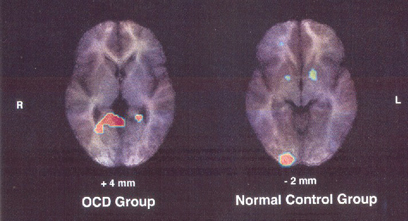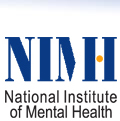Obsessive-Compulsive Disorder
People with Obsessive-Compulsive disorder (OCD), an anxiety disorder, suffer intensely from recurrent, unwanted thoughts (obsessions) and/or repetitive behaviors (compulsions) that they feel they cannot control. Repetitive behaviors such as handwashing, counting, checking, or cleaning are often performed with the hope of preventing obsessive thoughts or making them go away. Performing these so-called "rituals," however, provides only temporary relief, and not performing them markedly increases anxiety. Left untreated, obsessions and the need to carry out rituals can take over a person's life. OCD is often a chronic, relapsing illness. Fortunately, research—including studies supported by NIMH—has led to the development of treatments to help people with OCD.
Facts About OCD
- Approximately 3.3 million American adults ages 18 to 54, or about 2.3 percent of people in this age group in a given year, have OCD.1
- The first symptoms of OCD often begin during childhood or adolescence.2
- OCD is equally common in males and females.2
- OCD is sometimes accompanied by depression, eating disorders, substance abuse, or other anxiety disorders.2,3,4 Symptoms of OCD can also coexist and may even be part of a spectrum of other brain disorders, such as Tourette's syndrome.5 Appropriate diagnosis and treatment of other co-occurring disorders are important to successful treatment of OCD.
Treatments for OCD
Treatments for OCD include medications and behavioral therapy, a specific type of psychotherapy. The combination of these treatments is often most effective.6
Several medications have been proven helpful for people with OCD: clomipramine, fluoxetine, fluvoxamine, sertraline, and paroxetine. If one drug does not work, others should be tried. A number of additional medications are currently being studied.
A type of behavioral therapy known as "exposure and response prevention" is very useful for treating OCD. In this approach, a person is deliberately and voluntarily exposed to whatever triggers the obsessive thoughts, and then is taught techniques to avoid performing the compulsive rituals and to deal with the anxiety.
Research Findings
There is growing evidence that OCD represents abnormal functioning of brain circuitry, probably involving a part of the brain called the striatum.7 OCD is not caused by family problems or attitudes learned in childhood, such as an inordinate emphasis on cleanliness, or a belief that certain thoughts are dangerous or unacceptable.
Brain imaging studies using a technique called positron emission tomography (PET) have compared people with and without OCD. Those with OCD have patterns of brain activity that differ from people with other mental illnesses or people with no mental illness at all. In addition, PET scans show that in individuals with OCD, both behavioral therapy and medication produce changes in the striatum. This is graphic evidence that both psychotherapy and medication affect the brain.

Persons with OCD use different brain circuitry in performing a cognitive task than people without the disorder.7
For More Information
Please visit the following link for more information about organizations that focus on obsessive-compulsive disorder.
All material in this fact sheet is in the public domain and may be copied or reproduced without permission from the Institute. Citation of the source is appreciated.
NIH Publication No. 01-4598
References
1 Narrow WE, Rae DS, Regier DA. NIMH epidemiology note: prevalence of anxiety disorders. One-year prevalence best estimates calculated from ECA and NCS data. Population estimates based on U.S. Census estimated residential population age 18 to 54 on July 1, 1998. Unpublished.
2 Robins LN, Regier DA, eds. Psychiatric disorders in America: the Epidemiologic Catchment Area Study. New York: The Free Press, 1991.
3 Regier DA, Rae DS, Narrow WE, et al. Prevalence of anxiety disorders and their comorbidity with mood and addictive disorders. British Journal of Psychiatry Supplement, 1998; (34): 24-8.
4 Wonderlich SA, Mitchell JE. Eating disorders and comorbidity: empirical, conceptual, and clinical implications. Psychopharmacology Bulletin, 1997; 33(3): 381-90.
5 Sheppard DM, Bradshaw JL, Purcell R, et al. Tourette's and comorbid syndromes: obsessive compulsive and attention deficit hyperactivity disorder. A common etiology? Clinical Psychology Review, 1999; 19(5): 531-52.
6 Hyman SE, Rudorfer MV. Anxiety disorders. In: Dale DC, Federman DD, eds. Scientific American® Medicine. Volume 3. New York: Healtheon/WebMD Corp., 2000, Sect. 13, Subsect. VIII, p. 1.
7 Rauch SL, Savage CR, Alpert NM, et al. Probing striatal function in obsessive-compulsive disorder: a PET study of implicit sequence learning. Journal of Neuropsychiatry and Clinical Neuroscience, 1997; 9(4): 568-73.
|
 |


|
